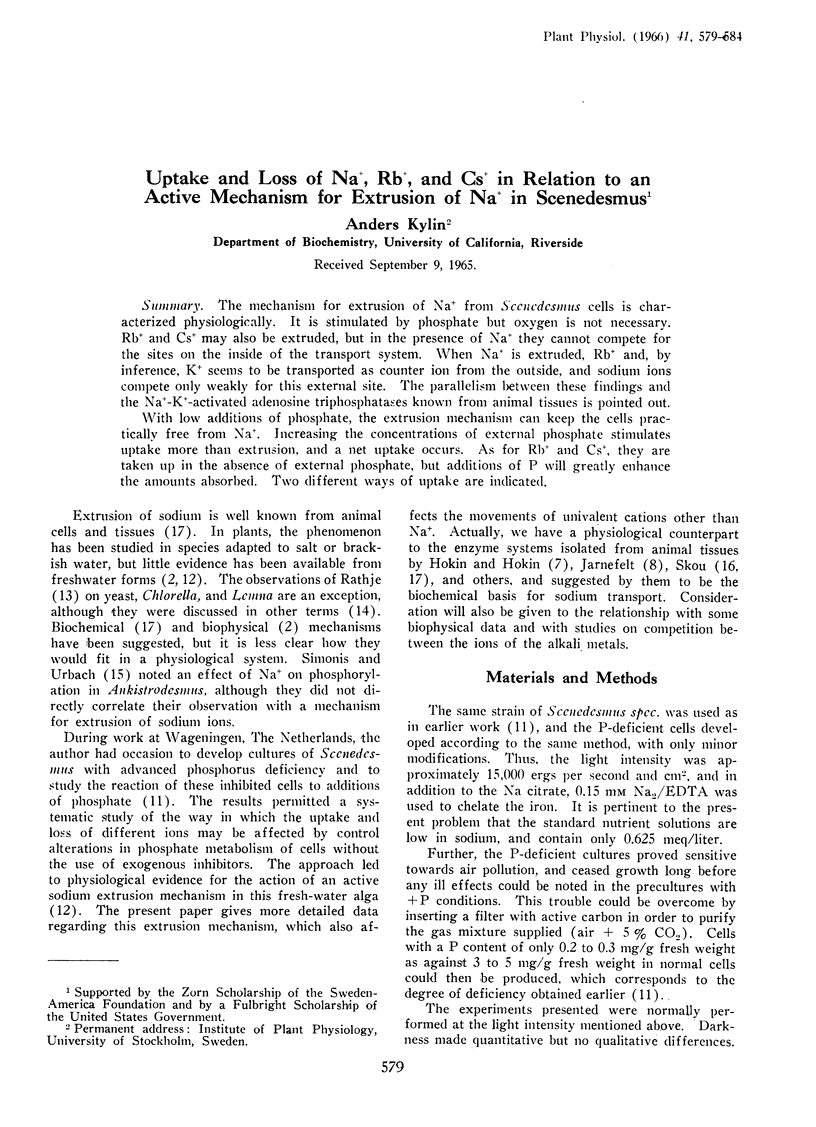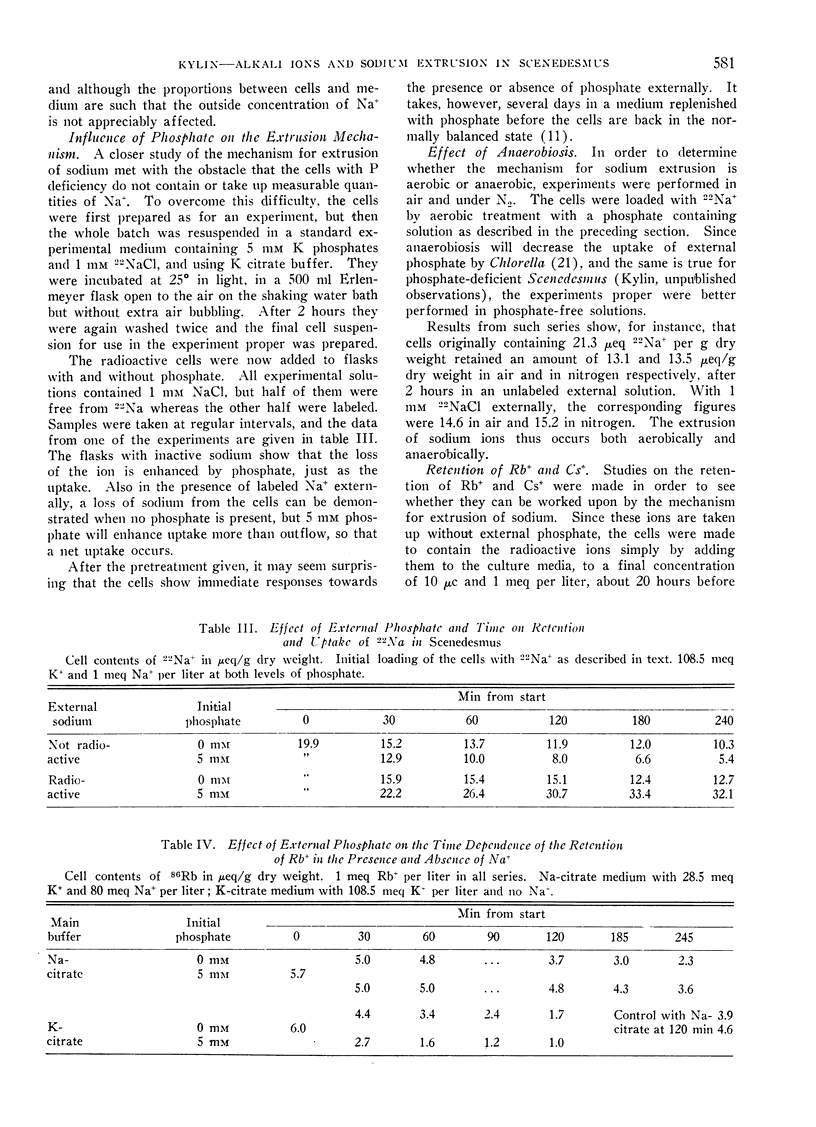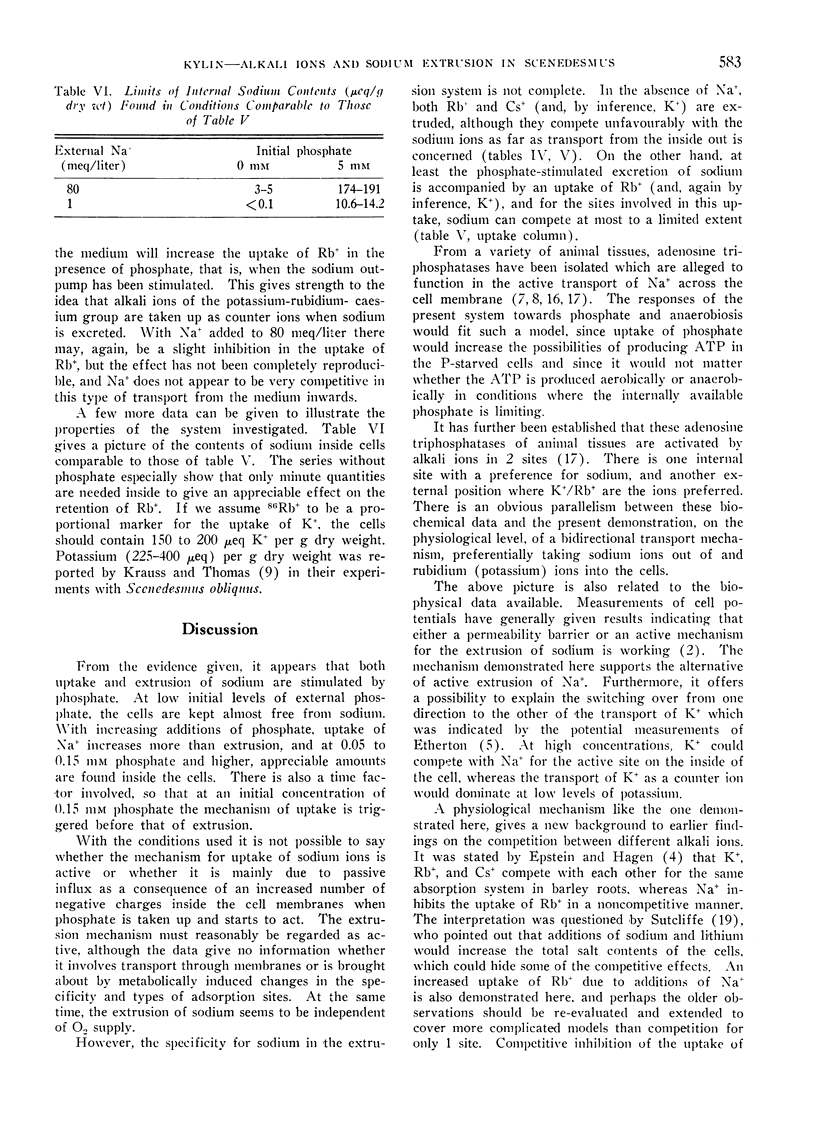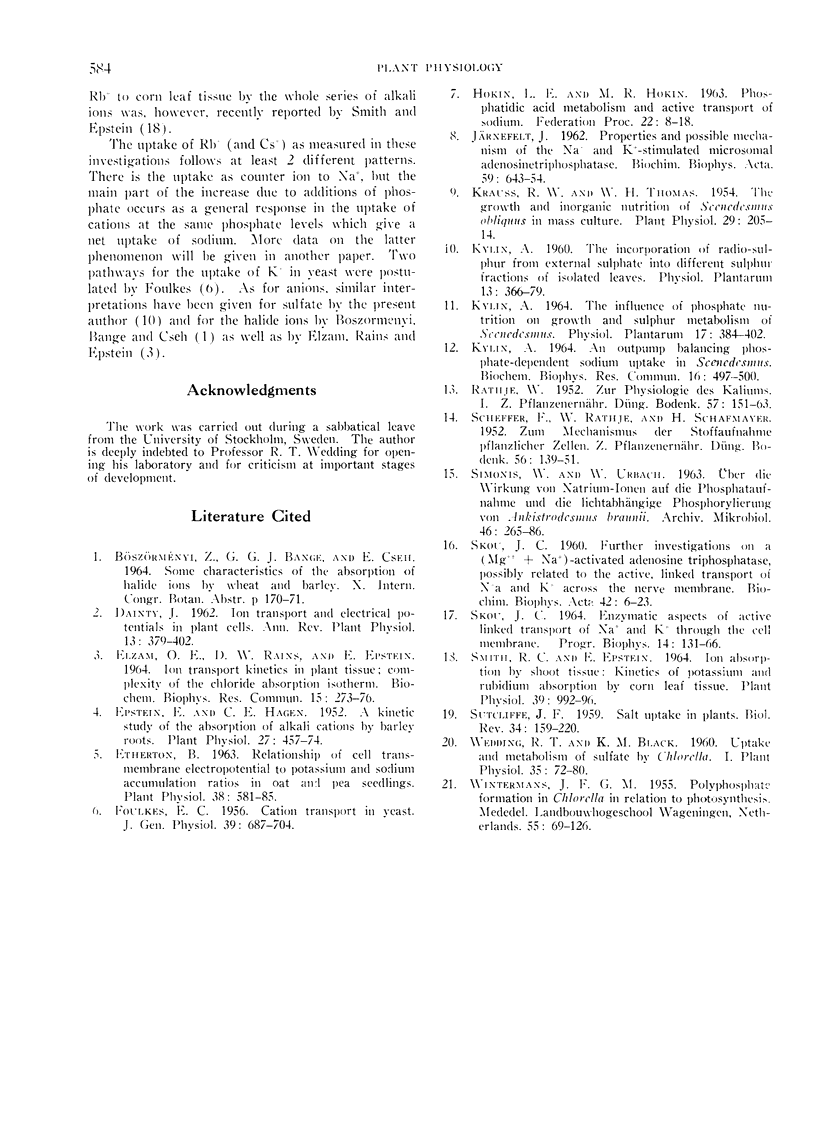Abstract
The mechanism for extrusion of Na+ from Scenedesmus cells is characterized physiologically. It is stimulated by phosphate but oxygen is not necessary. Rb+ and Cs+ may also be extruded, but in the presence of Na+ they cannot compete for the sites on the inside of the transport system. When Na+ is extruded, Rb+ and, by inference, K+ seems to be transported as counter ion from the outside, and sodium ions compete only weakly for this external site. The parallelism between these findings and the Na+-K+-activated adenosine triphosphatases known from animal tissues is pointed out.
With low additions of phosphate, the extrusion mechanism can keep the cells practically free from Na+. Increasing the concentrations of external phosphate stimulates uptake more than extrusion, and a net uptake occurs. As for Rb+ and Cs+, they are taken up in the absence of external phosphate, but additions of P will greatly enhance the amounts absorbed. Two different ways of uptake are indicated.
Full text
PDF





Selected References
These references are in PubMed. This may not be the complete list of references from this article.
- FOULKES E. C. Cation transport in yeast. J Gen Physiol. 1956 May 20;39(5):687–704. doi: 10.1085/jgp.39.5.687. [DOI] [PMC free article] [PubMed] [Google Scholar]
- HOKIN L. E., HOKIN M. R. Phosphatidic acid metabolism and active transport of sodium. Fed Proc. 1963 Jan-Feb;22:8–18. [PubMed] [Google Scholar]


